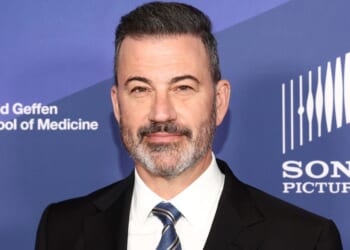(LifeSiteNews) — Cardinal Raymond Burke said that the Holy Mass was “radically reduced” after Vatican II with the “stripping away” of “beautiful elements” in the Traditional Latin Mass and praised the “transcendence” of the older rite in an interview with EWTN host Raymond Arroyo.
Cardinal Burke, a renowned canon lawyer and former prefect of the Apostolic Signatura, the highest court of the Catholic Church, also stressed the importance of celebrating Mass ad orientem – or with the priest facing the tabernacle or the east – and how proper worship is necessary for morality on Arroyo’s podcast.
Arroyo noted that “young people are flocking to this Latin Mass no matter where I travel. You go to Nashville, here in New Orleans, and this week in England, a seminary offered the ancient Roman rite in Birmingham and they were packed to the gills.”
Asked what is drawing so many young people to the traditional Mass, Cardinal Burke said, “It’s the beauty of what I call the more ancient form of the Roman rite – the form which it had practically from the time of Pope St. Gregory the Great (who reigned from 590–604) until the time of the Second Vatican Council (1962–1965).”
He then said that the massive changes to the liturgy after the Second Vatican Council were an “abuse” of the council’s teaching and had “a negative effect.”
“Oftentimes people refer to the reforms of after the Council of Trent as being the same as the reforms that were done to the sacred liturgy after the Second Vatican Council. But that’s not the case,” he stated.
“The reforms after the Council of Trent were to address some elements, but the form of the rite was maintained and so in continuity for more than 15 centuries. And, whereas, after the Second Vatican Council – and, I maintain, not due to the teaching of the council but to the way in which that teaching was abused – the rite was radically reduced,” he lamented.
Cardinal Burke also said that while “there is a continuity” between the traditional Mass and the new rite, “it’s so strained.”
“You don’t take something so rich in beauty and start stripping away the beautiful elements without having a negative effect,” he said.
READ: Largest ever survey of US Catholics shows faithful want an end to Communion in the hand
The prelate added that, at the Second Vatican Council, “There was no intent to kind of what I would call an ‘ecclesial wokeism’ that (claims that) everything in the past is no good, the form of the Mass is no good, we have to invent something new.”
“No, as St. Paul says about the Eucharist, ‘I handed unto you what I first of all received,’ and there should be that sense that also the form of the Mass is handed down from one generation to the next,” he said.
The Latin language, the cardinal also noted, “unified us not only in time as the Mass came down to us but also in space, that wherever you went you could always pray the Holy Mass, because it was the language of the Church.”
In fact, the Second Vatican Council instructed that “the use of the Latin language is to be preserved in the Latin rites,” as well as that Gregorian chant “should be given pride of place in liturgical services.”
The council “said there should be a reparatory of Gregorian chant, for instance, that would be taught throughout the world,” Cardinal Burke said. “Well, those things somehow got lost. Not everywhere, but, sadly, in great part.”
Latin Mass is ‘uplifting,’ emphasizes Christ
Cardinal Burke highlighted key differences between the new Mass, which was promulgated by Pope Paul VI in 1970 and is often called the Novus Ordo, and the Traditional Latin Mass, including the language, the solemnity and “transcendence” of the Latin Mass, the prayers at the foot of the altar in the traditional rite, the offertory prayers, the liturgical posture, and other things.
“I would say that the principal element I think which is attracting the young people and which attracts me is that the form of the rite is such that it makes it clear that it’s Christ Who’s acting,” he said.
In the older Mass, while “the priest is acting in the person of Christ … the priest fades into the background, and Christ emerges because of the form of the rite,” he observed.
“There’s no spontaneity. There’s not this kind of familiarity that was introduced after the council, you know, introducing ordinary language into the sacred liturgy,” he said.
“We don’t go to the Holy Mass to take part in some secular activity that keeps us in the in the worldly and what is not uplifting, what is not inspiring,” Cardinal Burke stressed. “We go there to encounter God and to be lifted up and to be drawn to a greater conversion of life, and that’s what we find in the what’s now called the Extraordinary Form or the more ancient usage of the Roman rite.”
He pointed out that many people speak of the “transcendence” of the Latin Mass and how “it’s clear when one is assisting at this rite that something heavenly is taking place, something that’s beyond this world,” which is “essential” for worship.
“Worship is worship of God as God Himself has instructed us to worship Him,” the prelate declared.
He further discussed how the prayers at the foot of the altar in the traditional Mass, which were eliminated in the Novus Ordo, “came into the form of the Mass from the ancient Jewish form of worship, the prayers of the priest before entering into the holy of holies.”
Moreover, he highlighted how the Latin Mass contains “beautiful prayers for the offertory” and “richer prayers before the priest’s Holy Communion.” “All of these are elements that … keep drawing us back to the presence of Christ,” he said.
Ad orientem is ‘the most natural, logical posture’ for Mass
Cardinal Burke also emphasized the importance of the ad orientem liturgical posture, where the priest faces the tabernacle or east – from which Christ will come at His Second Coming – instead of the assembly. He described facing ad orientem, which is standard at the Latin Mass but uncommon in the Novus Ordo, as “the most natural, logical posture.”
“Everyone is facing God” when the priest faces ad orientem, the cardinal said. “The priest is not praying to the people. The priest is not putting on some kind of theater for the people. He’s at the head of the people leading them in prayer to God.”
“The most natural, logical posture is that the priest should be facing east,” he affirmed. “He’s not turning his back on the people, but he’s, as a good shepherd, he’s at their head leading them and they’re following him.”
While some bishops, like Cardinal Blase Cupich of Chicago, Cardinal Wilton Gregory, the former archbishop of Washington, and, more recently, Archbishop Edward Weisenburger of Detroit, have purported to ban ad orientem worship in their dioceses, the Vatican has confirmed that bishops do not have authority to do so.
Proper worship is fundamental to morality, helps fight evil
Though some may downplay the significance of liturgical issues, Cardinal Burke stressed that correct worship of God is fundamentally important to morality and virtue, as it provides strength to overcome evil.
“The worship of God, our lifting up our minds and hearts to God, has a profoundly moral aspect to it,” he said. “It calls us to overcome the temptations, overcome the effects of original sin on our lives.”
“It’s in the sacred liturgy that we contact God in the most perfect way possible. We’re in communion with God in the most perfect way possible,” he explained. “And this gives us strength and force to continue that battle to overcome evil in our lives and to do good, to serve what is good.”
“It’s simply a matter of fact that when liturgy is banalized – for instance, St. Paul confronted that in Corinth in the early days of the Church, the people were eating and drinking and carrying on in the context of the sacred liturgy – then immorality ensues,” he warned.
He cited the example of Paul Claudel, the French poet who had a conversion experience while at solemn vespers in the Cathedral of Notre Dame.
“The beauty, the music, the form of the praying of the vespers gave him the strength then to embark on a conversion of life,” Cardinal Burke related. “And the stories are legion.
“The ancient form of the Roman rite inspired just such conversions” and “led to saints, created saints, helped people to become heroic in their Christian life,” he said.
“The world is in need of salvation, and this is also with regard to the sacred liturgy. What we should be offering in sacred worship is exactly that worship of God and not worship of ourselves and of our fallen nature,” Cardinal Burke concluded.
















